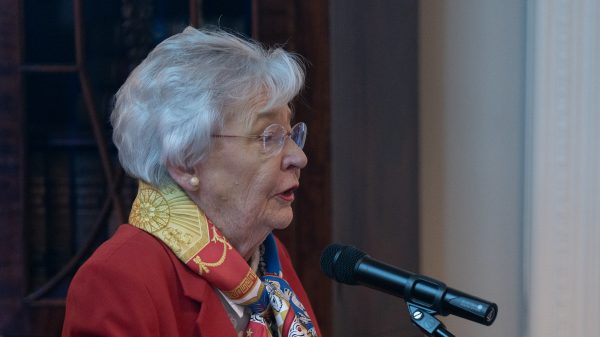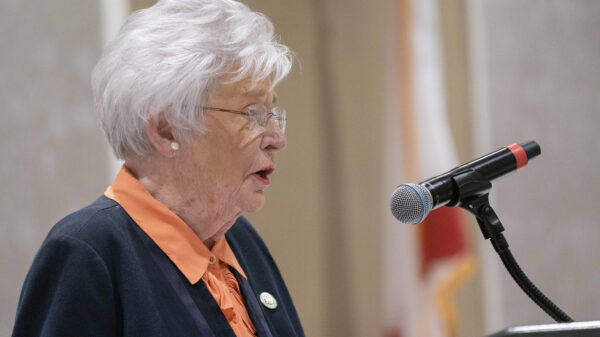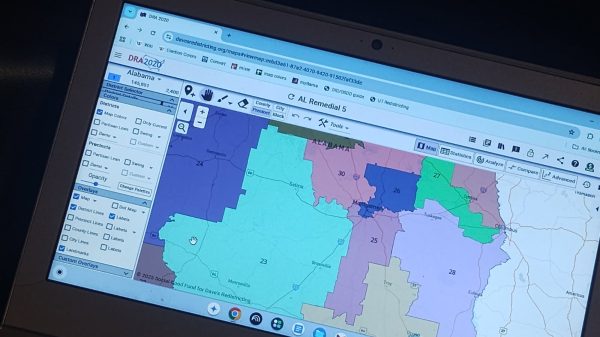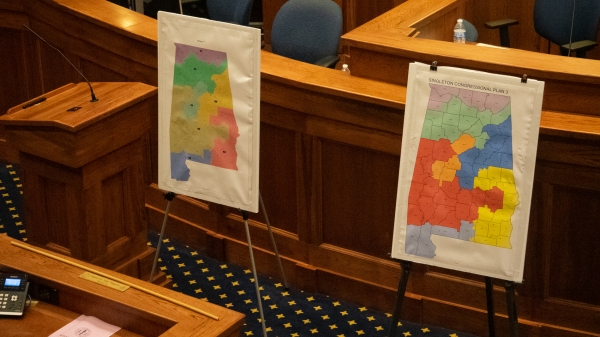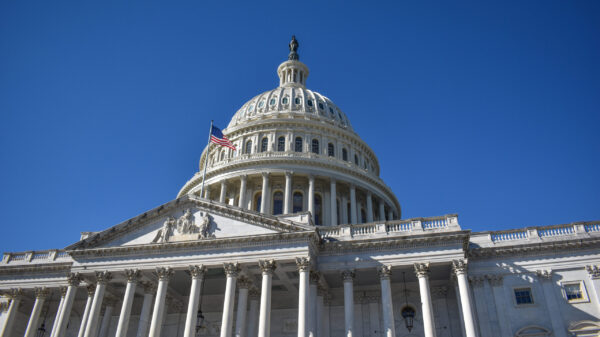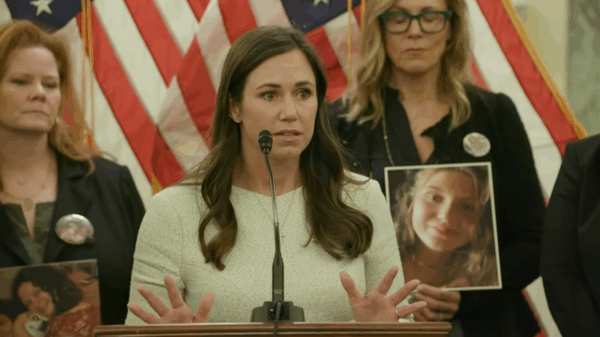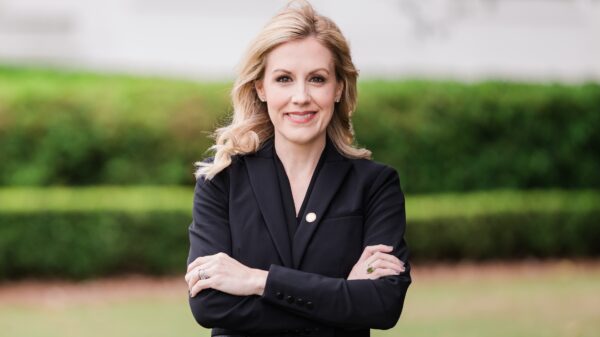The Alabama Drought Assessment and Planning Team Monitoring and Impact Group highlighted the environmental impacts of an unusually dry September during its Tuesday meeting.
ADAPT is a committee of the Alabama Department of Economic and Community Affairs which coordinates intra-governmental drought response measures. The task force’s Monitoring and Impact Group subcommittee is responsible for monitoring climate, as well as hydrological data and forecasts.
ADECA Senior Environmental Engineering Specialist Michael Harper pointed to below average rain levels in precipitation monitoring stations in Huntsville, Birmingham, Montgomery and Mobile.
Meanwhile, year to date precipitation rates at the four stations were close to or above normal, which Harper attributed to “very wet” conditions during the summer.
Harper went on to report that while the majority of the state “saw some beneficial rainfall” during the 11 days prior to the meeting, there are areas where unusually dry conditions persist.
“There are still spots that show anywhere from 34 to 65 days since they’ve seen a quarter inch of precipitation,” Harper said. “We’re still seeing some very dry pockets throughout the state. They may have received rainfall, but they did not receive very much.”
Harper went on to highlight data from the National Weather Service’s U.S. Seasonal Drought Outlook released on October 1.
The outlook, which projects drought conditions until the end of the year, reported that drought persists or is likely to develop in nearly the entirety of Alabama.
Harper also presented the most recent U.S. Drought Monitor map, which reported drought data from September 30. The U.S. Drought Monitor is released weekly and developed by the National Integrated Drought Information System, a partnership of multiple climate, atmospheric and agricultural government agencies.
The September 30 map showed that all of the state, except portions of north Alabama, is facing conditions ranging from abnormally dry to extreme drought.
Harper said extreme drought conditions were introduced for the first time in the state in 2025 for portions of Hale, Greene and Marengo Counties.
The Monitoring and Impact Group approved October’s ADECA Alabama Drought Declaration.
The declaration elevated drought advisories for regions of west Alabama, including upgrading Bibb, Choctaw, Clarke, Dallas, Greene, Hale, Marengo, Monroe, Perry, Sumter, Tuscaloosa, Washington and Wilcox Counties from drought watches to drought warnings.
The advisory also reflected the persistence of dry conditions in the southeast portion of the state, upgrading the three drought monitoring regions covering the area from drought advisories to drought watches.
Alabama Office of State Climatology Associate State Climatologist Lee Ellenburg emphasized that while October is typically Alabama’s driest month, below average precipitation in September can heighten risks posed by dry weather.
“The severity of October depends really on how we enter it,” Ellenburg said. “It’s normal to have very little precip, but when we show up to October already in big deficits, that’s when things can turn sideways pretty quickly.”
Representatives from the Alabama Department of Agriculture and Industries, the Alabama Cattlemen’s Association and the Alabama Farmers Federation described how the unusually dry past month has negatively impacted crop yields, soil health and hay production.
“It’s dry. It’s real dry in west Alabama. Row crop farmers are in the process of harvesting, but the damage was done a month ago. I get we just had some rain, but we really needed it a little while ago,” said ADAI Assistant Commissioner Bob Plaster.
“I would say right now the big concern is just getting winter grasses planted. That’s pretty tough in some of the areas where the ground is just too hard to drill anything,” said Alabama Cattlemen’s Association Vice President Erin Beasley.
“Hay production was cut short in a lot of areas, and then that, of course, came on top of the early summer inundation of rain, where you know they couldn’t even get out into the hay fields. So, it’s been an interesting summer, but we’re certainly watching and tracking the drought monitor each week,” Beasley added.
Director of ALFA’s Cotton, Soybeans, and Wheat & Feed Grains Division Carla Hornady discussed drought conditions she witnessed during a visit to a Dallas County farm she took earlier in the day.
She reported that the farm in Orville had seen below average cotton and soybean yields, and peanuts that graded poorly.
“To put in perspective how hard the ground is, they are having to change out their blades when digging peanuts every 10 acres because it’s just eating the blades up because of the condition of the ground,” Hornady said. “The crops at this point aren’t gonna get much help from the rain, but that’s where we currently are with a lot of the crops in west Alabama.”
Alabama Forestry Commission Assistant Protection Division Director Balsie Butler emphasized increased fire spread potential throughout the state.
He announced that while there was little to no risk of fires on Tuesday, a lower risk of fires is projected to emerge on Wednesday and continue through October 12 in the southern part of the state, excluding Mobile and Baldwin County.
“It’s a low risk, but it’s elevated,” Butler explained.
Butler went on to highlight data from the National Interagency Fire Center showing that south and central Alabama, except the Mobile and Baldwin County areas, will have above average significant fire potential during November, before returning to normal risk levels in December.
Butler also reported that Alabama saw one fire of significance since the Monitoring and Impact Group’s September 18 meeting, which burned 173 acres in Randolph County, and 146 total fires, which burned 1,483 acres.
“We have seen a significant increase in fire activity across the state,” Butler said.
The Forestry Commission released a fire danger advisory on September 30, raising awareness of heightened fire risks. The Alabama Department of Environmental Management has also currently implemented restrictions in 12 counties.
“Until the state receives sufficient rainfall to alleviate the severe dry situation, especially in central Alabama, this elevated fire danger will persist for the foreseeable future,” the alert reads.
Since the beginning of the year, Alabama has experienced 1,478 fires that burned 29,219 acres of land. In comparison, 2024 saw a total of 1,792 fires that burned 34,544 acres, while 2023 saw 1,804 that burned 21,971 acres.
The Monitoring and Impact Group’s next meeting is set for October 29.







